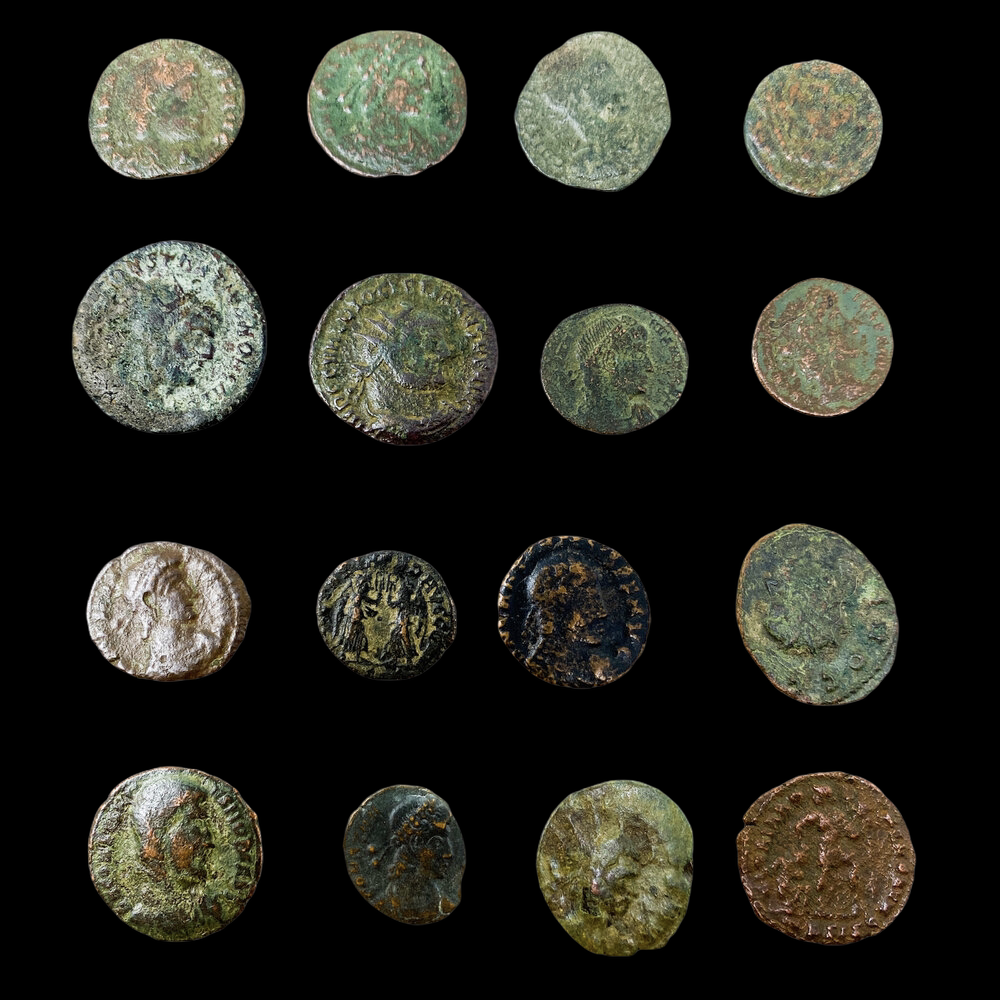1 'Randomly' Selected Excavated Roman Empire Bronze Coin


1 'Randomly' Selected Excavated Roman Empire Bronze Coin
When we established Premier Relics as one of the growing leading artifact dealers in the United States we wanted to bring authentic, researched, and museum grade artifacts to the general public. This ‘LOT COLLECTION’ was created on the basis of providing real and authentic relics from the past at EXTREMELY affordable prices.
When purchasing an artifact from our ‘Lot Collection’ you will receive one randomly selected artifact from the lot (group) of relics you see in the photo. The photo represents the exact quantity that is originally available as well as one of the randomly selected relics that you will receive. Meaning that one of the artifacts you purchased and receive is pictured in this exact photo.
These excavated Roman bronze coins show immaculate detail of the ancient rulers of the ancient Roman Empire. We acquired a recently dug group that was sent over from Europe and was dug in what was former Yugoslavia.
History of the Roman Empire:
The Roman Empire included large territorial holdings around the Mediterranean Sea in Europe, Northern Africa, and Western Asia ruled by emperors. From the accession of Caesar Augustus to the military anarchy of the third century, it was a principate with Italy as metropole of the provinces and the city of Rome as sole capital (27 BC – 286 AD). Although fragmented briefly during the military crisis, the empire was forcibly reassembled, then ruled by multiple emperors who shared rule over the Western Roman Empire (based in Milan and later in Ravenna) and over the Eastern Roman Empire (centred on Nicomedia and Antioch, later based in Constantinople). Rome remained the nominal capital of both parts until 476 AD, when the imperial insignia were sent to Constantinople, following the capture of Ravenna by the barbarians of Odoacer and the subsequent deposition of Romulus Augustus. The fall of the Western Roman Empire to Germanic kings, along with the hellenization of the Eastern Roman Empire into the Byzantine Empire, conventionally marks the end of Ancient Rome and the beginning of the Middle Ages.
Roman Currency:
Roman currency for most of Roman history consisted of gold, silver, bronze, orichalcum and copper coinage . From its introduction to the Republic, during the third century BC, well into Imperial times, Roman currency saw many changes in form, denomination, and composition. A persistent feature was the inflationary debasement and replacement of coins over the centuries. Notable examples of this followed the reforms of Diocletian. This trend continued into Byzantine times.